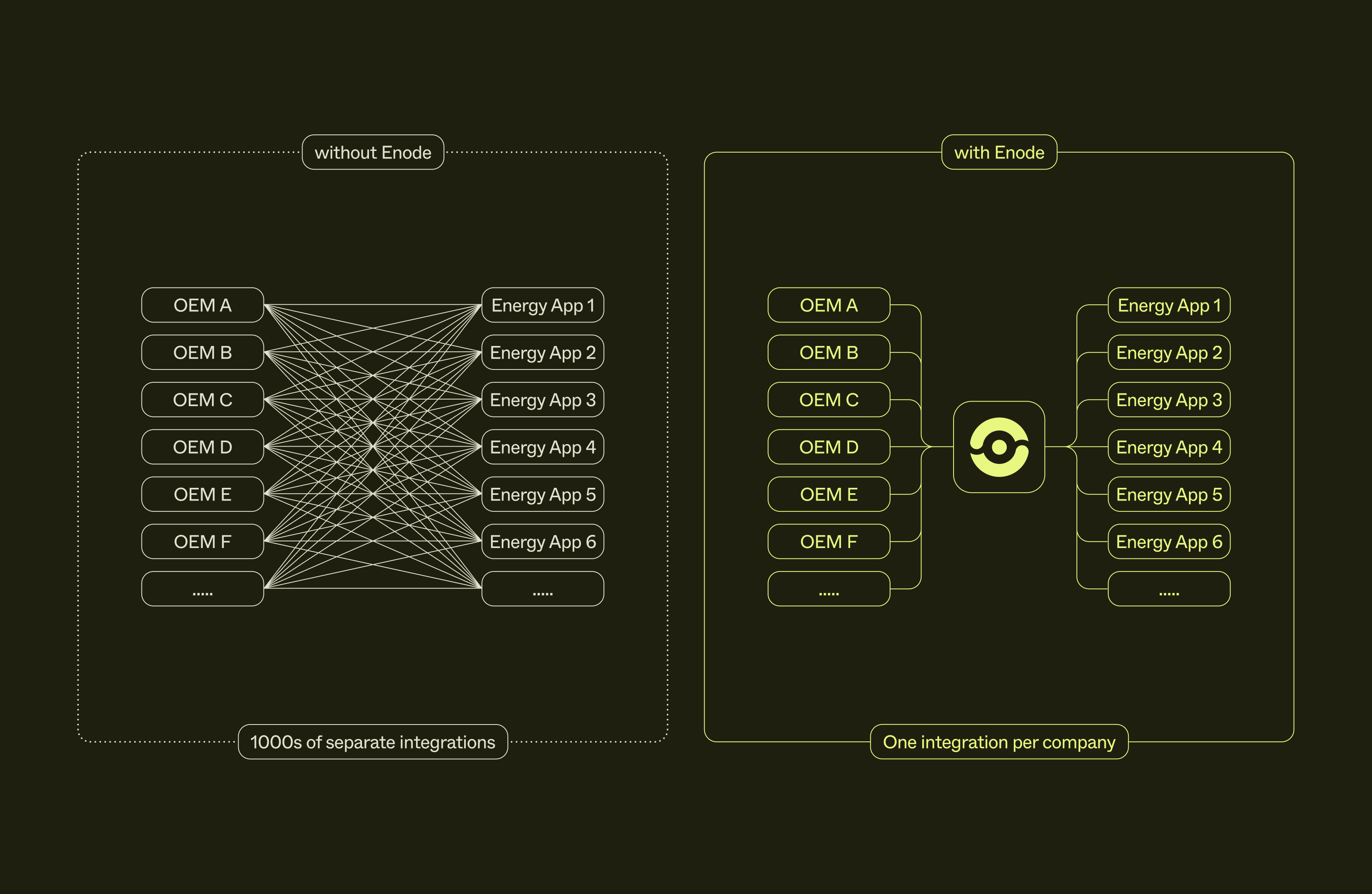Open energy: The digital foundation for the future of energy

EVs, chargers, solar inverters, heat pumps and batteries are now central to how we produce and consume energy. Yet most still operate in closed ecosystems. Each manufacturer has built its own hardware and software stack, locking consumers into one brand and limiting the ability of third-party services to connect devices across the home.
That fragmentation is holding the energy transition back. To build a system that runs on renewables, we need devices that can work together, consumers who can choose the services they trust, and companies that can innovate without barriers. For device manufacturers, this is becoming a defining digital strategy: offering secure third-party APIs that make their hardware interoperable by design.
This shift is part of a broader movement: open energy. Inspired by the success of open banking, open energy gives consumers secure, real-time access to their own devices through APIs. Instead of being limited to the device manufacturer’s app, people can choose the services that work best for them, whether it’s smart charging, automating their heat pump or joining a virtual power plant.
The impact goes beyond the individual home. Open energy enables interoperability at scale, unlocking smarter energy use, faster innovation and the flexibility the grid needs to run on renewables.
The benefits of open energy
Open energy delivers value across the entire ecosystem.
For consumers, it creates choice. They can connect devices to the services that matter most, whether that’s lowering costs, increasing comfort or cutting emissions. Connecting doesn’t mean handing over control. Some want automation, others just want better insights. Open APIs support both. By leveling the playing field, they also ensure companies compete on equal terms, which drives innovation and improves the user experience.
For hardware manufacturers, open energy increases the value of every product. Third-party APIs allow devices to become part of full home energy solutions instead of being locked into a single-purpose app. That opens the door to new use cases, stronger customer engagement and more device sales over time.
APIs also make devices more attractive to buyers by enabling smarter energy use, lower operating costs and seamless integration into the broader energy ecosystem. Over time, offering a third-party API won’t be optional. It will be the marker of a forward-looking manufacturer, and the foundation for long-term competitiveness.
They also provide a clearer path to compliance by making data handling secure and transparent, while future-proofing devices against emerging data-sharing requirements around the world.
For energy companies, it shifts the focus from supply alone to demand as well. With real-time access to EVs, batteries and heat pumps, they can orchestrate devices as part of virtual power plants, balance the grid more efficiently and share the benefits directly with customers. For energy retailers in particular, this creates opportunities to link generation and consumption in ways that were not possible before.
For grid operators, it provides a critical tool to manage volatility. As renewable generation rises, balancing supply and demand in real time becomes harder. Access to live device data and control creates the flexibility needed for a grid powered primarily by renewables.
Open energy in action
These benefits are not theoretical. Open energy is already powering a new generation of services:
- Delivering real-time insights based on household energy usage
- Smart charging EVs when renewable supply is high or prices are low
- Coordinating batteries and solar to maximize self-sufficiency
- Automating heat pumps to run in sync with green energy windows
- Enabling households to join demand response and flexibility programs at scale
Already today, apps built on open energy are connecting EVs, chargers, solar, heat pumps and batteries into full-home solutions, proving the model works and is ready to scale.
How open energy works
At its core, open energy relies on a secure, real-time data flow.
- Device manufacturers provide APIs that offer secure access to live device data and control in real time.
- Energy apps integrate with those APIs, often through an aggregator, to reduce complexity, speed up time to market and lower long-term maintenance costs.
- Consumers connect their devices to the services they want through a transparent, secure consent flow. Permissions are always controlled by the user and can be revoked at any time.
- Data and control flow in real time, always within the limits granted by the consumer.
This ensures interoperability does not come at the cost of security, scalability or consumer trust.
The role of Enode
Enode was founded to accelerate the shift to open energy. Today, hundreds of different device brands and models exist across categories like EVs, chargers, heat pumps, solar inverters and batteries. Connecting to all of them is complex and resource-intensive for both device manufacturers and energy apps.
Enode solves this by providing the infrastructure layer for connectivity.
For device manufacturers, Enode offers a single integration point to distribute secure access to device data and control across a wide network of energy applications. Instead of managing one-off integrations with individual partners, device manufacturers can make their devices instantly compatible with a growing ecosystem: extending their market reach, improving performance and ensuring long-term maintainability.
For energy applications and companies, Enode unlocks scale. A single integration enables support for a wide range of hardware across brands and categories. Whether building a smart charging service, a grid flexibility product or a full home energy app, developers can deliver more value to users, faster, without being slowed down by fragmented integrations.

The future of energy is open
The energy system is evolving fast. As more devices come online, the need for interoperability will only grow. Open energy ensures that consumers remain in control, innovation isn’t held back by complexity, and the transition to renewables can scale.
This shift is already underway. As devices, services and grids become more connected, open energy will define how the energy system scales to meet the demands of a renewable future.
